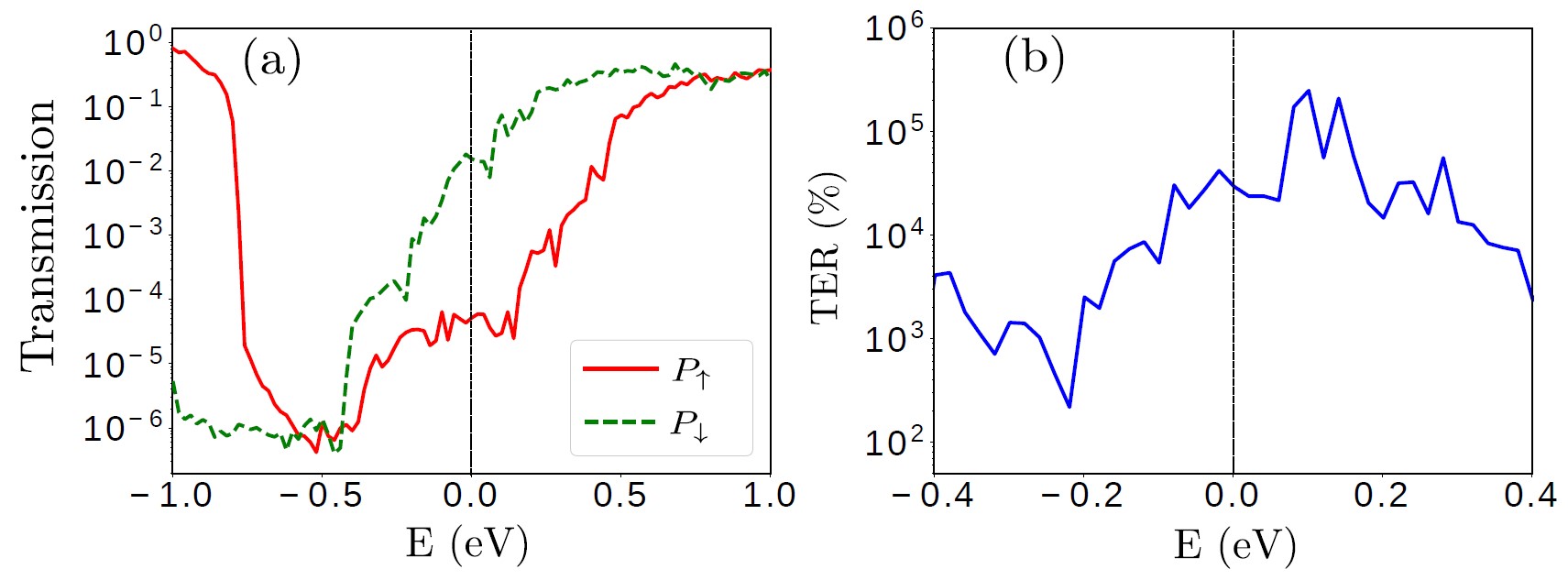
Two-dimensional (2D) ferroelectric materials (FEMs) and their application in ferroelectric tunnel junctions (FTJs) have attracted much attention. But the way to better integrate with the present semiconductor technology remains secret.
Recently, physicists from Institute of Solid State Physics, Hefei Institutes of Physical Science (HFIPS), proved the existence of the ferroelectricity in the metal and 2D ferroelectric materials (FEM) contact system and realized a giant tunnel electroresistance (TER) ratio in the corresponding ferroelectric tunnel junction (FTJ), suggesting a new way to construct high performance 2D FTJ.
The research team is led by Prof. ZHENG Xiaohong, who is working in Key Laboratory of Materials Physics of ISSP. They made a series of study on ferroelectric tunnel junctions with metal contacts to two-dimensional ferroelectric materials.
They studied the electronic structure of the Au(010)-In2Se3 metal-semiconductor heterostructure and the electrical TER behavior of the FTJ constructed with Au(010)-In2Se3 as the leads and In2Se3 as the channel region.
"Our goal is to make clear whether ferroelectricity still persists when the 2D FEM are in contact with metals and whether the corresponding FTJ exhibit high TER effect as demanded for memory devices.” said ZHENG Xiaohong,
To solve this problem, they constructed FTJ with top contact between Au(010) and In2Se3, a 2D FEM with out-of-plane ferroelectric polarization by density functional calculations combined with a nonequilibrium Green function technique.
To their surprise, the TER ratio soared to 104%. "When the metal and FEM contact changed," said ZHENG, “The giant TER arised from a Schottky type to an Ohmic type accompanying with the ferroelectric polarization reversal."
They also got zero tunnel barrier height between Au(010) and In2Se3, which means good ability of electron injection from metal to semiconductor and low contact resistance.
The research was financially support by the National Natural Science Foundation of China; National Key R&D Program of China etc.
Link to the paper: Giant tunnel electroresistance in ferroelectric tunnel junctions with metal contacts to two-dimensional ferroelectric materials

Fig. 1 The structure of the FTJ. The dashed line boxes indicate the left (‘L’) and right (‘R’) leads. The red and blue arrows indicate the election injection process from Au(010) into In2Se3 and the process of electron transmitting from the left lead into the channel region, respectively. (Image by KANG Lili)

Fig. 2 (a) The transmission functions for both polarized states; (b) The TER ratio as a function of electron energy. (Image by KANG Lili)
Contact:
ZHAO Weiwei
Hefei Institutes of Physical Science (http://english.hf.cas.cn/)
Email: annyzhao@ipp.ac.cn